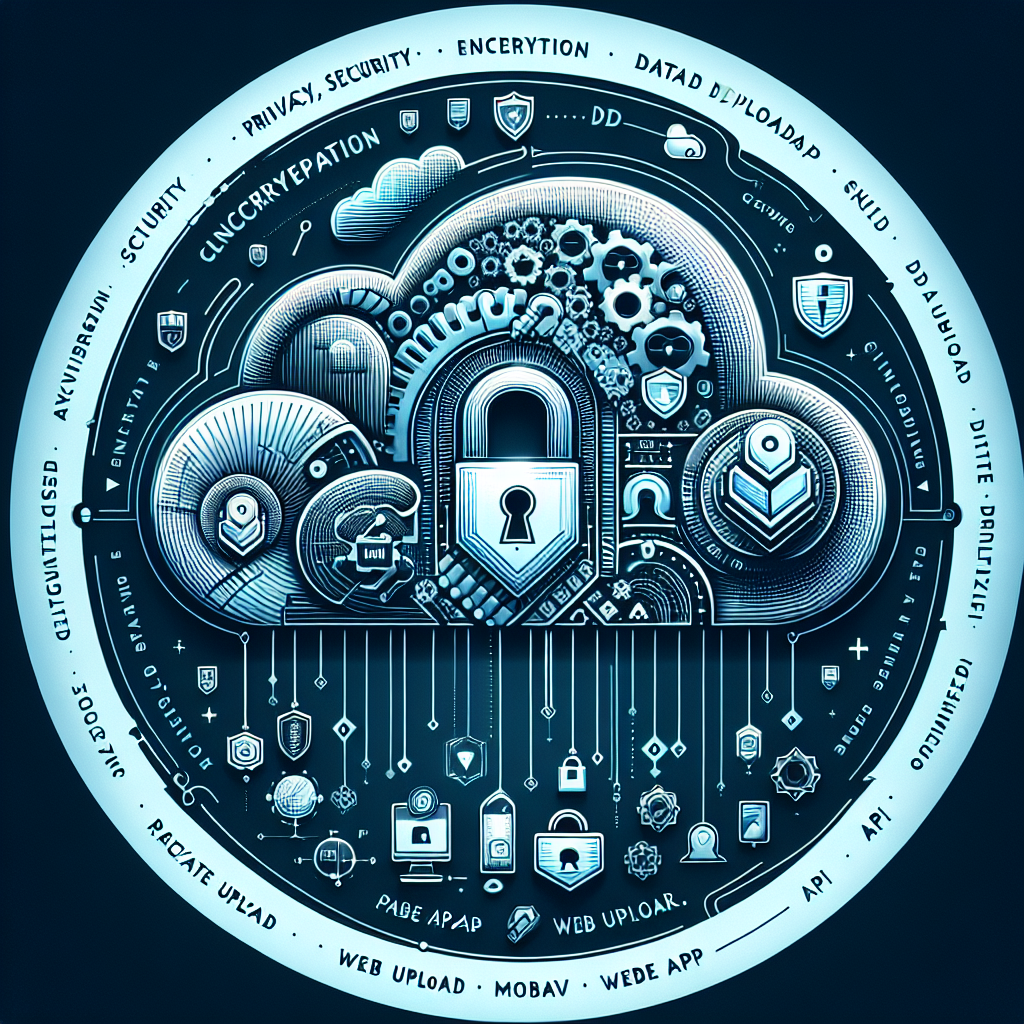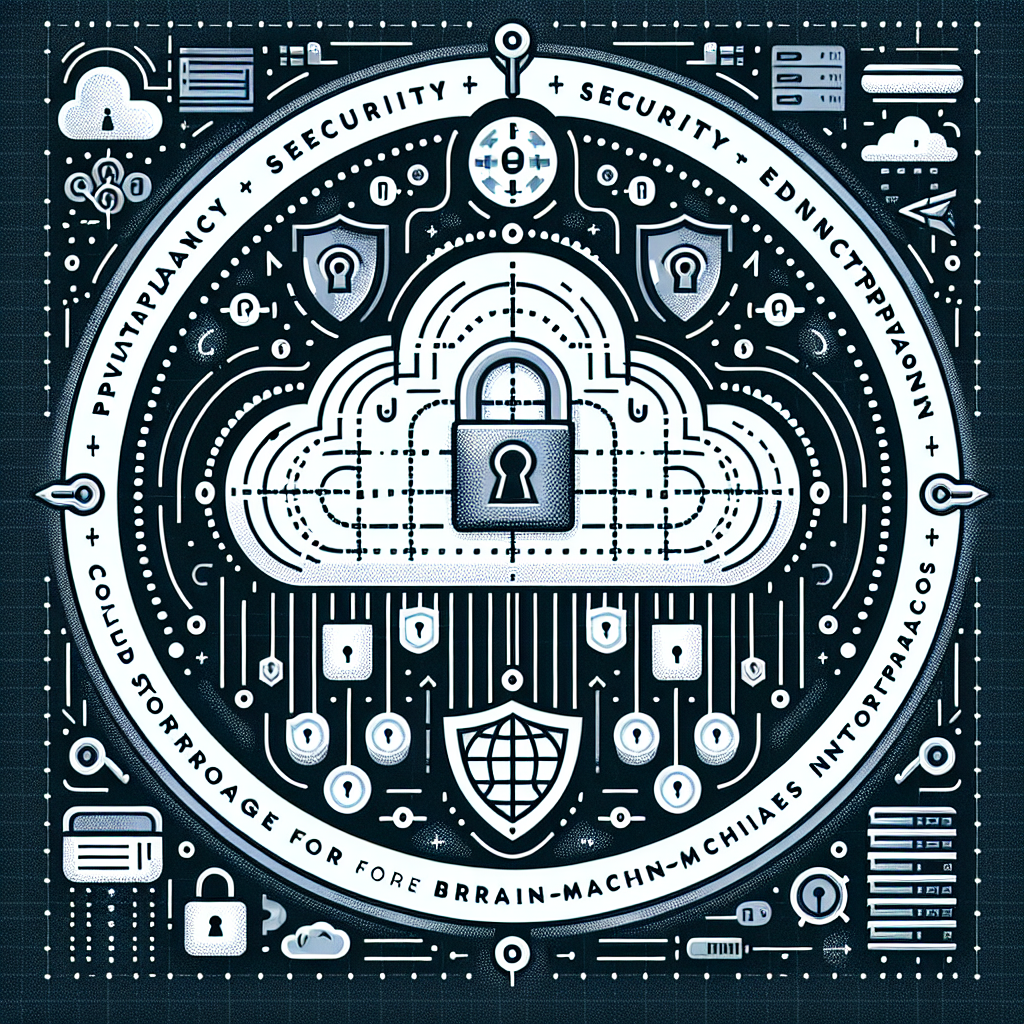Unlock encrypted content
Please enter your SSCE key to initiate on-the-fly decryption.
Decryption key: (Click cancel if you don't have the key)
Copied link to clipboard.
This feature is unavailable for free accounts. Upgrade now and enjoy all Premium benefits.
Go Premium!
This feature is unavailable for free accounts. Upgrade now and enjoy all Premium benefits.
Go Premium!
Please open this page in browser ( Google Chrome or Safari ) to use this feature.
Open In Browser
Data Redundancy: Enhancing Data Security and Reliability in the Digital Age
Random related video for this blog.
Copied share link to clipboard.
With the exponential growth of data, ensuring its security, accessibility, and reliability has become paramount. This article explores the concept of data redundancy and its role in safeguarding valuable information. We will also delve into the revolutionary advancements in technology such as 3D printing, file sharing capabilities, online collaboration, file synchronization, Li-Fi (Light Fidelity), file retention, robotic process automation, FileLu.com storage capacity, and secure file locking and unlocking.
Data Redundancy: An Essential Safeguard for Data Integrity
Data redundancy refers to the practice of duplicating data to enhance its availability and reliability. By storing multiple copies of the same data across different locations or devices, organizations can mitigate the risks associated with data loss or corruption. Redundancy can be implemented at various levels, including hardware redundancy, software redundancy, and network redundancy. Hardware redundancy involves duplicating critical components such as hard drives or servers to ensure uninterrupted access to data. For example, in a server cluster setup, multiple servers are interconnected, allowing seamless failover in case one server fails. This redundancy ensures minimal downtime and uninterrupted access to data. Software redundancy, on the other hand, involves implementing backup solutions to create copies of data at regular intervals. These backups can be stored on separate storage devices or in the cloud. In case of data loss or corruption, these backups can be restored to recover the lost information. FileLu.com, a leading cloud storage provider, offers robust backup solutions with flexible storage plans, ensuring data redundancy and peace of mind. Network redundancy focuses on creating redundant network paths to ensure continuous data transfer. By implementing redundant network connections and utilizing load balancing techniques, organizations can prevent network failures from disrupting data transmission. This redundancy is particularly crucial for businesses heavily reliant on real-time data processing or online collaboration tools.3D Printing Technology: Revolutionizing Manufacturing
and Beyond 3D printing technology has emerged as a game-changer across various industries, including manufacturing, healthcare, and architecture. Also known as additive manufacturing, 3D printing allows the creation of three-dimensional objects by layering materials based on digital models. This technology offers numerous benefits, including increased design flexibility, reduced costs, and faster production cycles. In the manufacturing sector, 3D printing has revolutionized prototyping and production processes. It enables rapid iteration of designs and the creation of complex geometries that were previously challenging to manufacture. With 3D printing, organizations can reduce lead times, optimize supply chains, and customize products to meet individual customer needs. The healthcare industry has also witnessed significant advancements through 3D printing technology. Medical professionals can now create patient-specific implants, prosthetics, and surgical models, improving patient outcomes and reducing surgery time. Additionally, 3D bioprinting holds immense promise in the field of regenerative medicine, enabling the creation of functional human tissues and organs. Architects and designers have embraced 3D printing as a tool for rapid prototyping and model creation. This technology enables them to visualize and test designs before committing to full-scale production. Moreover, 3D printed structures have been used to construct innovative and sustainable buildings, showcasing the potential of this technology in the construction industry.
File Sharing Capabilities: Enhancing Collaboration and Efficiency
In today's interconnected world, collaboration is key to driving innovation and productivity. File sharing capabilities have evolved to facilitate seamless collaboration among individuals and teams, regardless of geographical barriers. With the advent of cloud storage and file sharing platforms, sharing and accessing files has become faster, easier, and more secure. Online collaboration platforms such as FileLu.com provide a centralized hub for storing, sharing, and collaborating on files. These platforms offer features like real-time document editing, version control, and commenting, enabling teams to work together efficiently. With file sharing capabilities, team members can access the latest version of a document, make edits, and provide feedback in real-time, streamlining workflows and reducing communication gaps. File synchronization is another crucial aspect of file sharing capabilities. It ensures that files stored on multiple devices, such as computers, smartphones, and tablets, are kept up to date and consistent. Changes made to a file on one device are automatically synced across all devices, ensuring that everyone has access to the latest version of the file. This synchronization eliminates the need for manual file transfers and reduces the risk of working with outdated information. Li-Fi (Light Fidelity) is an emerging wireless communication technology that utilizes light waves to transmit data. Unlike traditional Wi-Fi, which relies on radio waves, Li-Fi offers faster data transfer speeds and increased security. Li-Fi can be used to enhance file sharing capabilities by enabling high-speed data transfer within a room or a confined space. This technology has the potential to revolutionize the way we share files, particularly in environments where Wi-Fi signals may be unreliable or congested.File Retention: Preserving Information for Compliance and Historical Purposes
In today's digital era, organizations face increasing regulatory requirements regarding data retention. File retention refers to the practice of preserving files and documents for a specified period, often driven by compliance regulations or historical record-keeping purposes. Proper file retention ensures that organizations can retrieve and present relevant information when required, mitigating legal and operational risks. Compliance regulations vary across industries and jurisdictions. For example, in the financial sector, organizations must adhere to regulations such as the Sarbanes-Oxley Act (SOX) or the Payment Card Industry Data Security Standard (PCI DSS). These regulations mandate the retention of financial records and customer data for specific periods, typically ranging from several years to a decade. FileLu.com's storage capacity and robust file retention policies make it an ideal solution for organizations seeking compliance-ready storage options. With plans ranging from 256 GB to 500 TB, FileLu.com offers scalable storage solutions that can accommodate the growing data needs of businesses. Additionally, FileLu.com's advanced encryption and secure file locking features ensure the confidentiality and integrity of stored files, further enhancing compliance and data security.Robotic Process Automation: Streamlining Workflows and Increasing Efficiency
Robotic Process Automation (RPA) is an emerging technology that leverages software robots or "bots" to automate repetitive and rule-based tasks. These bots mimic human actions and interactions with digital systems, enabling organizations to streamline workflows, reduce errors, and increase operational efficiency. RPA can be applied to various business processes, including data entry, invoice processing, customer support, and file management. In the context of file management, RPA can automate tasks such as file organization, renaming, and archiving. For example, a bot can be programmed to monitor a designated folder, automatically categorize incoming files based on predefined rules, and archive older files to optimize storage space. By offloading these mundane tasks to bots, employees can focus on more value-added activities, leading to increased productivity and job satisfaction. FileLu.com's secure file locking and unlocking feature complements RPA initiatives by providing an additional layer of control and auditability. With secure file locking, organizations can prevent unauthorized access or modifications to critical files during automated processes. This ensures data integrity and minimizes the risk of accidental or malicious file tampering. Conclusion In conclusion, the digital age has brought forth a multitude of technologies and capabilities that enhance data security, collaboration, and efficiency. Data redundancy serves as a crucial safeguard, ensuring the availability and integrity of valuable information. Meanwhile, 3D printing technology, file sharing capabilities, file retention practices, Li-Fi, robotic process automation, and secure file locking contribute to a more connected and productive world. With FileLu.com's comprehensive storage solutions, organizations can leverage the power of data redundancy, file sharing, and file retention to safeguard their valuable information. From robust backup options to secure file locking features, FileLu.com offers the tools necessary to navigate the complexities of the digital landscape. Frequently Asked Questions (FAQs):Question: What is the significance of data redundancy? Answer:
Data redundancy plays a vital role in ensuring data availability and reliability. By storing multiple copies of data, organizations can mitigate the risks of data loss or corruption, enhancing data integrity.
Question: How does 3D printing technology revolutionize manufacturing? Answer:
3D printing enables rapid prototyping, customization, and the creation of complex geometries. It reduces lead times, optimizes supply chains, and empowers manufacturers to create innovative products tailored to customer needs.
Question: How do file sharing capabilities enhance collaboration? Answer:
File sharing capabilities facilitate seamless collaboration by providing a centralized platform for storing, accessing, and collaborating on files. Real-time document editing, version control, and commenting features streamline workflows and improve communication.
Question: What is file retention, and why is it important? Answer:
File retention refers to the practice of preserving files for compliance or historical purposes. It ensures organizations can retrieve and present relevant information when required, mitigating legal and operational risks.
Question: How does robotic process automation streamline workflows? Answer:
Robotic process automation automates repetitive and rule-based tasks, reducing errors and increasing operational efficiency. By offloading mundane tasks to bots, employees can focus on higher-value activities, leading to increased productivity.
By Amelia Isabella
Email: [email protected]
Related
The Future of Data Storage: Exploring Innovations in Cognitive Robotics...
December 1, 2024
Read More
The Future of Data Management: Exploring Scalable Storage Solutions and...
December 22, 2024
Read More
The Future of Data Management: Exploring Innovative Technologies in Cloud...
October 17, 2024
Read More
Collaborative Video Editing with Smart Contracts and FileLu.com: The Future...
June 10, 2023
Read More
FileLu Cloud Storage: Simplifying File Sharing Capabilities for the Digital...
June 6, 2023
Read More
Secure Data Sharing and Collaboration with Biometric Authentication on FileLu...
June 10, 2023
Read More
Popular
The Future of Technology: Integrating Virtual Reality, Autonomous Driving, and...
August 27, 2025
Read More
The Future of Data Management: Exploring Innovations in Robotics, Genetic...
August 20, 2025
Read More
The Future of File Management: Innovations in Data Sovereignty, Security,...
August 24, 2025
Read More
Innovations in Cloud Storage and Data Management: Navigating the Future...
September 3, 2025
Read More
The Future of File Storage: Exploring Cryonics, Transhumanism, and Advanced...
September 7, 2025
Read More
The Future of Cloud Storage: Innovations in Scalable Storage, Synchronization,...
September 10, 2025
Read More
Latest
The Future of Cloud Storage: Innovations in Scalable Storage, Synchronization,...
September 10, 2025
Read More
The Future of File Storage: Exploring Cryonics, Transhumanism, and Advanced...
September 7, 2025
Read More
Innovations in Cloud Storage and Data Management: Navigating the Future...
September 3, 2025
Read More
The Future of Technology: Integrating Virtual Reality, Autonomous Driving, and...
August 27, 2025
Read More
The Future of File Management: Innovations in Data Sovereignty, Security,...
August 24, 2025
Read More
The Future of Data Management: Exploring Innovations in Robotics, Genetic...
August 20, 2025
Read More
The Future of Data Management: Exploring Efficient Technologies in File...
August 13, 2025
Read More
The Future of Technology: Exploring Innovations in Artificial Intelligence, Data...
August 10, 2025
Read More
The Future of File Management: Exploring Cloud-Based Backup, Video Storage,...
August 6, 2025
Read More
The Future of Data Storage: Exploring Transhumanism, File Management, and...
August 3, 2025
Read More
The Future of Technology: Innovations in Electric Vehicles, Data Migration,...
July 30, 2025
Read More
The Future of Interstellar Colonization and Futuristic Transportation: Exploring Advanced...
July 23, 2025
Read More
Efficient File Management: Exploring Security, Synchronization, and Bulk Uploading Features...
July 16, 2025
Read More
The Future of Technology: Exploring Data Deduplication, Swarm Robotics, and...
July 13, 2025
Read More
Exploring Innovative Technologies for Efficient Data Management and Secure File...
July 9, 2025
Read More



















